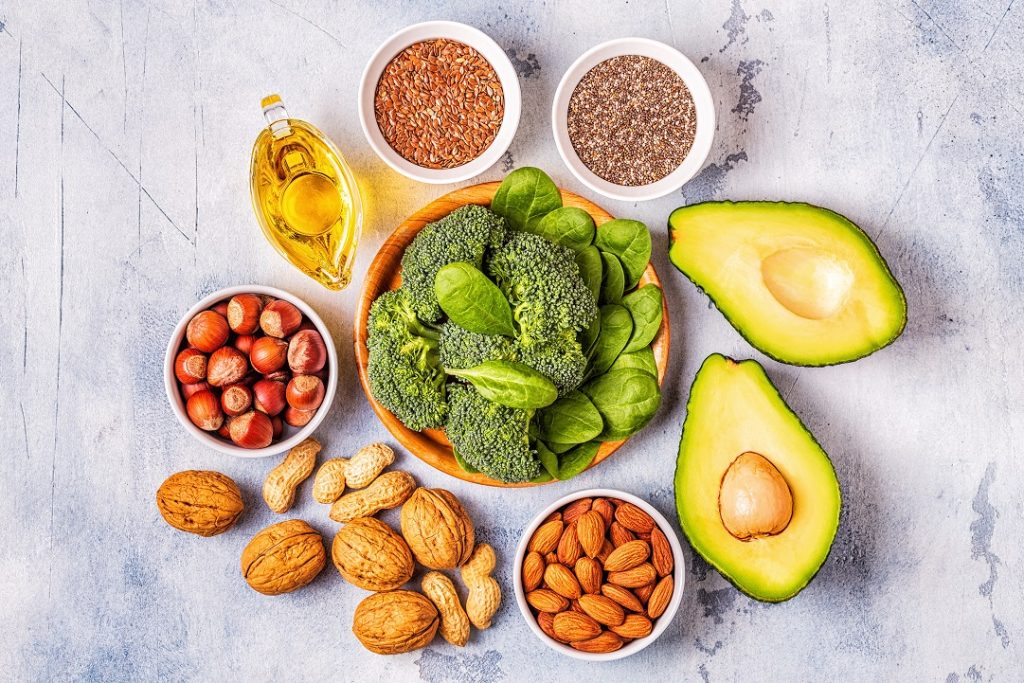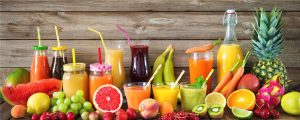Omega -3 fatty acids are found in several food sources. Some of these are natural, while other are fortified with the nutrient for added health benefits.
Omega-3 fatty acids are found in plant-based foods and marine fish and seafood, among the natural food sources.
Out of the three types of Omega-3 fatty acids — ALA, DHA, and EPA, plant-based foods are rich in ALA. Here are some examples along with the amount of Omega-3 they offer:
| Plant-Based Food | Omega-3 Fatty Acids they offer per standard serving size of 100 gram |
| Chia Seeds | 18070 mg |
| Walnuts | 9178 mg |
| Flax Seeds | 22815 mg |
| Soybeans | 1425 mg |
| Hemp Seeds | 21428 mg |
In addition to the nuts and seeds mentioned above, some plant oils are also good sources of Omega-3 fatty acids. These are –
- Flaxseed oil
- Canola Oil
- Soybean Oil
- Perilla oil (only to be used for dressing in very minimal amounts as it is a highly saturated oil)

Our body can convert some ALA into EPA and DHA. However, this type of conversion is not frequent, and the amount produced is insufficient. Therefore, the best way to maintain the required levels of these TrueBasics Omega 3 fatty acids in our body is through the foods we eat.
Also, both these fatty acids play different roles in our body. While EPA affects blood clotting and offers cardiovascular benefits, DHA plays a role in signaling between the nerves. It also positively impacts vision quality. As compared to the other organs in our body, our eyes and the brain have high DHA content. Hence, low DHA levels are associated with poor visual function and cognitive development.
EPA & DHA are, therefore, needed by our bodies to ensure normal functioning of the brain, heart, eyes, and joints. They also impact skin and hair health. ALA, on the other hand, reduces body inflammation by reducing the production of cytokines — the inflammation-causing substances in our body.
The fatty acids DHA and EPA are primarily found in seafood, marine fish, fatty freshwater fish, and sea algae. Some examples of the same are given below:
| Non-Plant-Based Food | Omega-3 Fatty Acids they offer per standard serving size of 100 grams |
| Mackerel | 5134 mg |
| Salmon | 2260 mg |
| Cod Liver Oil | 2440 mg |
| Oysters | 435 mg |
| Sardines | 1480 mg |
| Anchovies | 2113 mg |
In addition to seafood, EPA and DHA can also be derived from seaweed and algae, including spirulina, nori, chlorella, etc. People eat these because they are the only vegetarian sources of EPA and DHA and offer significant health benefits.
Some fortified foods rich in Omega – 3 include – Eggs, Milk, Yogurt, Soy Beverages, Cereal’s and Orange Juice. Besides these, one can also opt for TrueBasics Omega -3 supplements that help cover any nutritional gaps in this nutrient intake through our daily diet.












